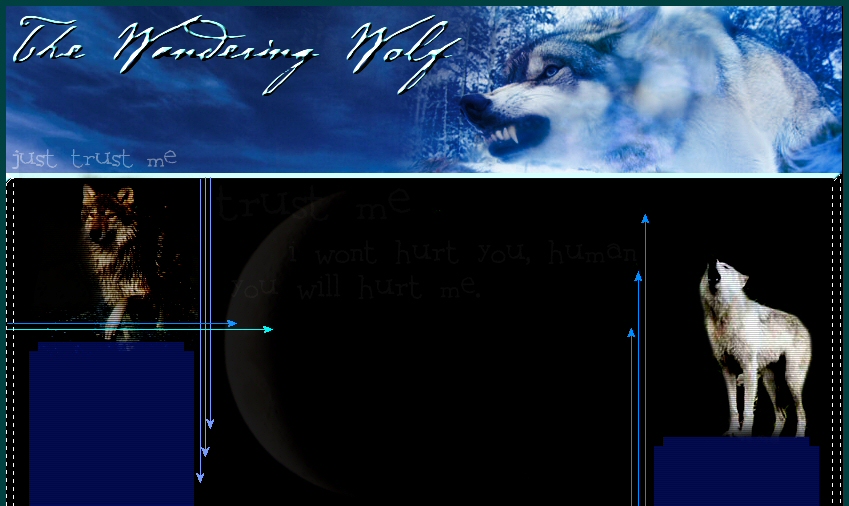

.: The Wolves :.
.: WSC Animals :.
.: The Cub :.
.: The Handwriting
.: My ABCs
.: The Basics
.: Googlism of Jade
.: The Pictures
.: The Pets
.: The Quizzes
.: The Art
.: Sister Sites :.

.: The Site :.
.: For A Wanderer
.: Competition :.
.: Contact :.
.: The Striped Skunk :.

Geographic Range: Striped skunks occur from central Canada south to northern Mexico
Status: Striped skunks have no special status or protection
Length: 22.6 in - 31.49 in, tail length 6.8 - 12.1 in.
Weight: 3.5 - 10 pounds
Description: Skunks are recognized by their characteristic color pattern. The fur is black with a white stripe that begins as a triangular shape on the top of the head, forks into two stripes that travel down the sides of the back, and merges again at the base of the tail. Another white stripe runs from the nose between the eyes to the forhead. Stripe width and length vary with each individual. Stripes sometimes occur on the tail, but the tail is often black and white hairs intermixed. Striped skunks are about the size of a domestic cat, with a small head and ears and short legs. Their feet are plantigrade (walk on soles of feet with heels touching the ground) and have five partially webbed toes. They have long claws to aid in molar on each side of the upper jaw and two on each side of the upper jaw and two on each side of the lower jaw. The upper molars have a characteristic square shape.
Habitat: The striped skunk prefers somewhat open areas with a mixture of habitats such as woods, grasslands, and agricultural clearings. They are also often found in suburban areas.
Typical Diet: Striped Skunks are omnivores. They eat insects, small mammals, fish, crustaceans, fruits, grasses, leaves, buds, grains nuts, and carrion. They are opportunistic and diet changes depending on the time of year and available resources.
Similar Species: Spotted Skunks
Special Notes:
- Striped skunks are nocturnal, sleeping during the day in the underground burrows and emerging around dusk to search for food.
- Skunks generally use existing burrows made by other animals of equal size or natural burrows under tree stumps or buildings. THey use their long front claws to build their own den if neccesary.
- Both males and females undergo periods of inactivity from November until March. Females often remain in their winter dens for the entire duration, but males may emerge during mild temperature periods to feed.
- Males are typically polygamous and solitary
- Females are monestrous, but they occasionally can have a second estrous if the first pregnancy is unsuccessful.
- Mating takes place from mid-February until mid-March.
- The gestation period is between 62-66 days.
- Five or six young are born in each litter
- Baby striped skunks are blind, deaf, and extremely immature. they nurse for about a month and a half in the mother's den.
- Striped skunks usually do not discharge the foul smelling contents of their scent glands unless mortally threataned.
- When faced with danger they arch their back, erect their tail and hair and bend into a U-shape with both head and rump facing the enemy.
- Two streams of fluid from scent glands located just inside the anus are emitted
- The spray can travel over 9 feet
- Striped skunks, because of their diet, often eliminate insect and rodent pests that cause destruction of crops
- Skunk furs were once of great importance to the fur industry.
- Skunks are one of the primary reservoirs of rabies, which is why it is illegal to have skunks as pets in many states, including Minnesota.